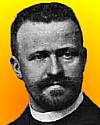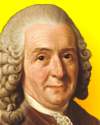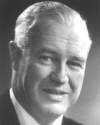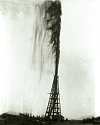 | TODAY IN SCIENCE HISTORY NEWSLETTER - 10 JANUARY |
| Feature for Today |
 Research Ship Trapped in Ice Almost a Year (1902-3) On 10 Jan 1949, Erich Dagobert von Drygalski died, a German geographer and glaciologist who discovered a volcano, free of ice, on the Antarctic continent. He named it Gaussberg, after the name of his research ship Gauss in which he led the German South Polar Expedition (1901-03). The ship became trapped in frozen seas and the team spent almost a year (21 Feb 1902 to 8 Feb 1903) making sledge expeditions from the immobile ship, including geological and magnetic surveys. The volcano was 50 miles west of this location. He also ascended to an altitude of 1600-ft in a balloon that was part of the equipment carried on the voyage. There were 32 men in all—5 scientists, 5 naval officers and 22 regular crew. Upon his return, he published scientific reports in a series of 20 volumes. In 1910, he took part in Count Zeppelin's expedition to Spitsbergen. There remains a record of the Seige of the South Pole, the story of the Antarctic Exploration in an excerpt from Early Expeditions of the Twentieth Century by Hugh Robert Mill (1905). When you read it, watch for the role of the penguins in getting the ship away from her icy trap. An earlier article on von Drygalski's South Polar Expeditions from the Monthly Weather Review (1901) records the forward-looking expectations for the work he would accomplish. |
| Book of the Day | ||
|
| Quotations for Today | |
 | In the case of those solids, whether of earth, or rock, which enclose on all sides and contain crystals, selenites, marcasites, plants and their parts, bones and the shells of animals, and other bodies of this kind which are possessed of a smooth surface, these same bodies had already become hard at the time when the matter of the earth and rock containing them was still fluid. And not only did the earth and rock not produce the bodies contained in them, but they did not even exist as such when those bodies were produced in them. |
 | The traditional boundaries between various fields of science are rapidly disappearing and what is more important science does not know any national borders. The scientists of the world are forming an invisible network with a very free flow of scientific information - a freedom accepted by the countries of the world irrespective of political systems or religions. ... Great care must be taken that the scientific network is utilized only for scientific purposes - if it gets involved in political questions it loses its special status and utility as a nonpolitical force for development. |
 | A herbarium is better than any illustration; every botanist should make one. |
| Quiz | |
| Before you look at today's web page, see if you can answer some of these questions about the events that happened on this day. Some of the names are very familiar. Others will likely stump you. Tickle your curiosity with these questions, then check your answers on today's web page. | |
| Births | |
 | Robert Woodrow Wilson, born 10 Jan 1936, was an American radio astronomer who shared, with his coworker Arno Penzias, the 1978 Nobel Prize for Physics made a discovery using a microwave horn antenna at Bell Laboratories, Holmdel, New Jersey in 1964. What was this discovery? What was this discovery? |
 | On 10 Jan 1638, Nicolaus Steno was born, a Danish scientist who first made unprecedented discoveries in anatomy, then established some of the most important principles of modern geology. In Prodromus (1669), he published the important principle of geology known as the law of superposition. What is the law of superposition? What is the law of superposition? |
| Deaths | |
 | Lord Alexander R. Todd (1907-1977) was a British biochemist whose research on the structure and synthesis of nucleotides, nucleosides, and nucleotide coenzymes gained him the 1957 Nobel Prize for Chemistry. It was known that they are built up of three quite different "building stones": phosphoric acid, a sugar, and a heterocyclic base containing nitrogen, assembled in one macromolecule. Todd researched how they are connected to each other. Where are nucleotides found? Where are nucleotides found? |
 | A certain Swedish botanist and explorer (1707-1778) was the first to establish a precise biological classification, with a uniform system for naming organisms by genera and species of organisms.  Who was this scientist? Who was this scientist? |
| Events | |
On 10 Jan 1949, RCA introduced a new form of phonograph record in the U.S. What was this new type of record? What was this new type of record? | |
 | On 10 Jan 1901, the discovery of oil at Spindletop marked the beginning of major oil finds in that U.S. state. Which state? Which state? |
| Answers |
| When you have your answers ready to all the questions above, you'll find all the information to check them, and more, on the January 10 web page of Today in Science History. Or, try this link first for just the brief answers. Fast answers for the previous newsletter for January 9: DNA Fingerprinting for unique forensic identification of humans other organisms from their DNA material • pelican • Puffing Billy • Caroline Lucretia Herschel • decade including the year 1839 • Albert Einstein. |
| Feedback |
 If you enjoy this newsletter, the website, or wish to offer encouragement or ideas, please send feedback by using your mail reader Reply button. If you enjoy this newsletter, the website, or wish to offer encouragement or ideas, please send feedback by using your mail reader Reply button. Your click on a StumbleUpon, Google+ or Facebook social button on the site webpages is also a welcome sign of appreciation. Thank you for using them. |
| Copyright |
| To find citations for quotations go to the corresponding webpage by clicking on the “quotes” balloon icon. Sources for the thumbnails appear on today's webpage with the corresponding item. � This newsletter is copyright 2013 by todayinsci.com. Please respect the Webmaster's wishes and do not put copies online of the Newsletter � or any Today in Science History webpage. (If you already have done so, please remove them. Thank you.) Offline use in education is encouraged such as a printout on a bulletin board, or projected for classroom viewing. Online, descriptive links to our pages are welcomed, as these will provide a reader with the most recent revisions, additions and/or corrections of a webpage. For any other copyright questions, please contact the Webmaster by using your mail reader Reply button. |
--
If you do not want to receive any more newsletters, Unsubscribe
To update your preferences and to unsubscribe visit this link


Δεν υπάρχουν σχόλια:
Δημοσίευση σχολίου